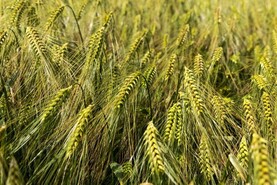I recently had the opportunity to go on a CAFRE-led Farm Innovation Visit (FIV) to Scotland and the northeast of England which looked at low-carbon sucklers and beef.
While the systems are very different to those used in Northern Ireland, it is always good to see other operations and how farmers cope with their situations.
There is always something to learn from and something we can use to make our farms better.
We visited five farms in two and a half days, and they all had different things to offer. I have picked out two to give a little flavour of what they are doing.
First visit
The first was to Thistleyhaugh Farm run by Duncan Nelless and his brother Angus.
The brothers had taken over their farm from their father and changed things completely.
Their father was into show type cattle and had won lots of rosettes and trophies.
They are now farming 2,000 acres in the northeast of England.
Some of the land is very good and some is up in the hills. They have 260 suckler cows and 2,000 ewes on an organic system.
All female stock are outwintered on deferred grazing up in the hills. Cows are Aberdeen Angus and Hereford with a mature weight of 620kg.
The Nelless brothers bring the cows down in the spring and calving takes place outside from the start of April.
Calving lasts for about seven weeks and there is minimal intervention.
Cows are weaned on 1 November and sent back to the hill for the winter.
The steers are wintered indoors and then grazed on some of the better ground. Most are finished off grass at 18 to 20 months of age with a carcase weight between 260kg and 300kg and with a fat cover of between 3+ and 4.
Anything deemed not finished are sold as stores.
It is a very simple system with low labour requirements, no fertiliser or sprays, very little housing and silage requirements and no need for purchased feed.
The scale of the farm makes this system possible (farms in Northern Ireland are too small to make this a realistic option).
However, while the brothers are working with block grazing which is very similar to our paddock system, the cattle are going into very strong covers with lots of stemmy grass.
The cattle are not forced to clean out the sward. It is the opposite of what I do, but their performance from grass alone is exceeding mine.
It is definitely food for thought.
Second visit
The other visit was to Oakwood Mill Farm, run by Giles and Stuart Henry, near Selkirk in the Scottish borders.
This was a similar system, but on a smaller scale. They have 110 hectares of in-by land and 110 hectares of hill, with 85 Luing cows on an organic system.
The cows are block grazed on the hill in the winter and then brought down to the in-by land in April for calving.
All calving takes place out-doors with minimal intervention. The cows and calves are then batched and rotationally grazed in 1ha blocks for the summer.
They are a small humble looking cow, but they work hard and keep natural flesh and can survive the winter on the hill.
The Henrys have worked out their cost for wintering the cows at £100/head which is very impressive.
They also take in steers for a shared finishing arrangement. All steers are finished from grass alone at 19 to 20 months with a carcase weight of 280kg to 295kg.
Again, their grassland management did not seem as good as mine but with daily liveweight gains between 1.2 and 2.0kg/head/day, the farm was well ahead of anything I have been achieving.
Like the first farm, they were also going into very heavy covers and moving the cattle on with lots of grass left behind. They also had massive amounts of clover easily competing with high grass covers.
Sacrifice performance
The visits have left me questioning what I do. Am I eating my grass too low and therefore sacrificing performance?
I have been encouraged to put cattle into fields of lush green grass and not take them out until there is nothing left (utilise it all).
Maybe I have lost sight of the important things. We need grass to grow grass. Grazing to lower covers will also mean a higher worm burden.
Animal performance should always be the main priority.






 This is a subscriber-only article
This is a subscriber-only article










SHARING OPTIONS: